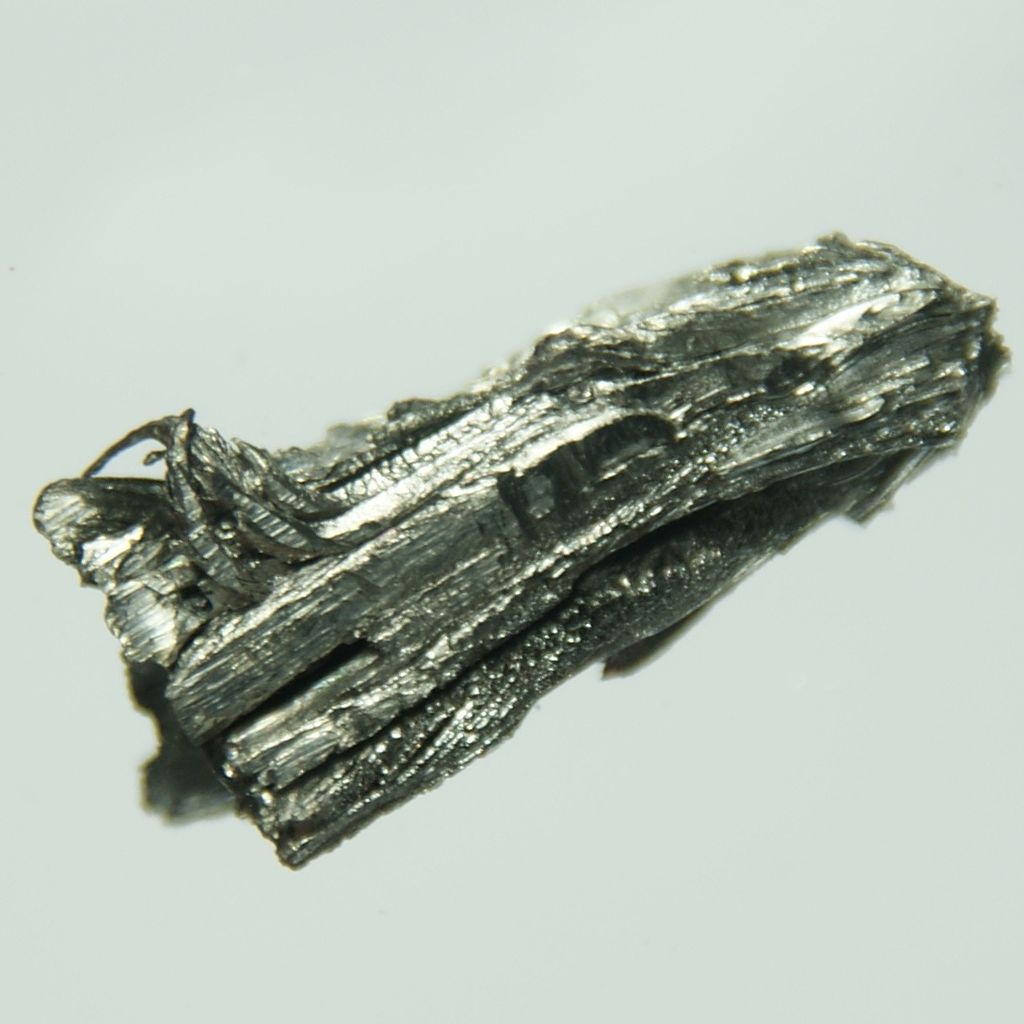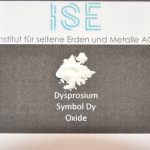Dysprosium, Dy, 66
Dysprosium, Dy, atomic number 66
Dysprosium (Dy), chemical element, a rare earth metal from the lanthanide series of the periodic table.
Dysprosium is a relatively hard metal and in its pure form is silvery white. It's quite stable in the air and shines at room temperature. Dysprosium shavings ignite easily and burn incandescent. The metal reacts slowly with water and quickly dissolves in dilute acids - with the exception of hydrofluoric acid (HF), in which it forms a protective layer of insoluble DyF3. The metal is a very strong paramagnet above about 180 K (-93 ° C or -136 ° F); it is antiferromagnetic between about 90 (-183 ° C or -298 ° F) and 180 K and ferromagnetic below 90 K.
The French chemist Paul-Émile Lecoq de Boisbaudran found this element for the first time (1886) in association with holmium and other heavy lanthanides; the French chemist Georges Urbain was later able to produce a relatively pure fraction (1906). Some important mineral sources for dysprosium are laterite ion clays, xenotime, fergusonite, gadolinite, euxenite, polycrase, and blomstrandin.
Dysprosium (from Greek δυσπρόσιτος "inaccessible") is a chemical element with the element symbol Dy and the atomic number 66. In the periodic table it is in the group of lanthanides. 1886 succeeded in the French PE Lecoq de Boisbaudran the isolation of dysprosium oxide from a sample of holmium oxide, which had been thought to be a uniform substance until then. Since the chemical properties of lanthanides are very similar and they are always associated in nature, a distinction was only possible here with very complex analysis methods. Its contribution to the structure of the earth's crust is given as 0,00042 weight percent. The starting materials are monazite and bastnasite.
The naturally occurring isotopes are all stable and have mass numbers 164 (natural frequency 28,3 percent), 162 (25,5 percent), 163 (24,9 percent), 161 (18,9 percent), 160 (2,33 percent), 158 (0,10 percent) and 156 ( 0,06 percent). Without nuclear isomers, a total of 29 radioactive isotopes of dysprosium are known. They range in size from 138 to 173. The least stable is dysprosium-139 (half-life 0,6 seconds), and the most stable is dysprosium-154 (half-life 3,0 × 106 years).
Recovery of dysprosium
After a complex separation of the other Dysprosiumbegleiter the oxide is reacted with hydrogen fluoride to Dysprosiumfluorid. It is then reduced to metallic dysprosium with calcium to form calcium fluoride. Separation of remaining calcium residues and impurities takes place in an additional remelting in vacuo. After distillation in a high vacuum to reach high purity dysprosium.
Commercial separation is by liquid-liquid extraction or ion exchange techniques. The metal is produced by metallothermal reduction of the anhydrous halides with alkali or alkaline earth metals. The metal is further purified by vacuum distillation. Dysprosium exists in three allotropic (structural) forms. The α-phase is densely occupied hexagonal with a = 3.5915 Å and c = 5.6501 Å at room temperature. When cooled to ~ 90 K, the ferromagnetic order is accompanied by an orthorhombic distortion, β-Dy, of the hexagonal close-packed lattice. The β-phase has a = 3.595 Å, b = 6.184 Å and c = 5.678 Å at 86 K (-187 ° C, or -305 ° F). The γ-phase is body-centered cubic with a = 4,03 Å at 1.381 ° C (2.518 ° F).
Dysprosium is mainly derived from bastnasite and monazite, where it occurs as an impurity. Other dysprosium-containing minerals are euxenite, fergusonite, gadolinite and polycrase. It is funded in the USA, China, Russia, Australia and India.
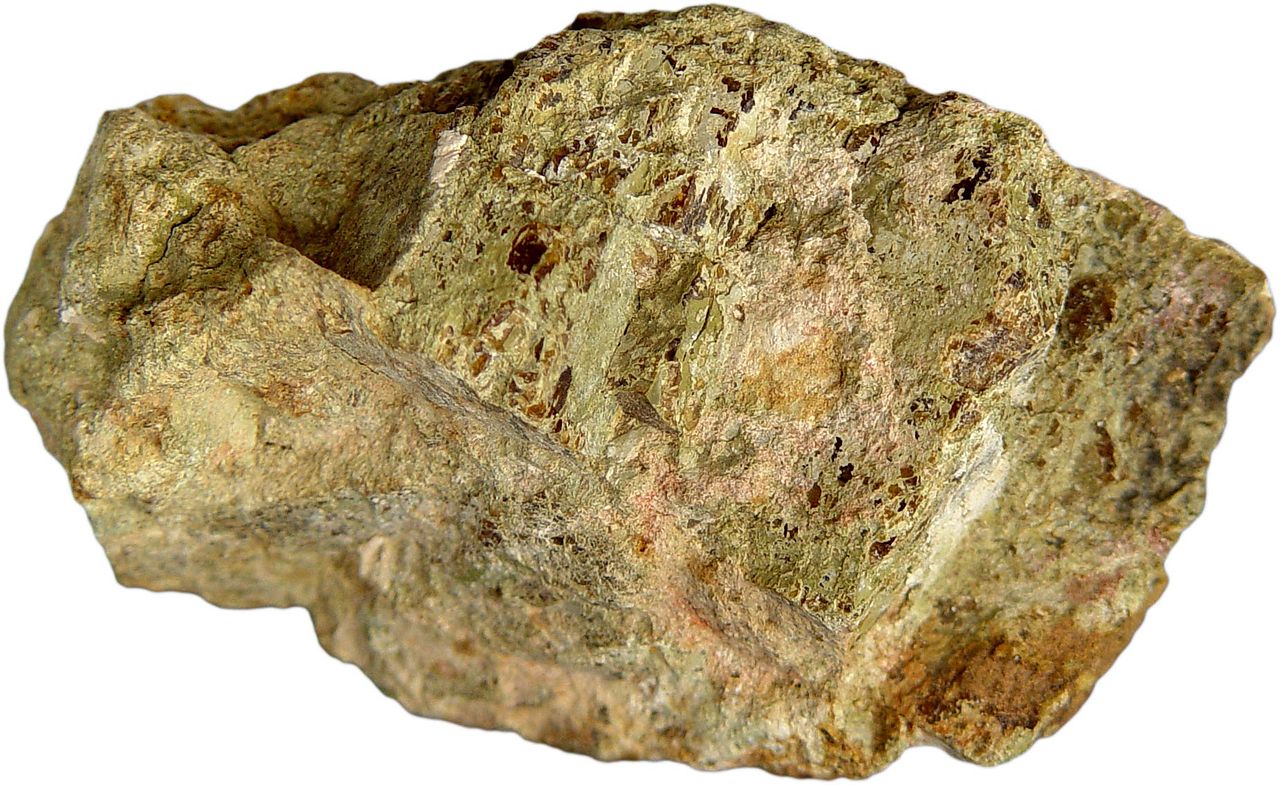
Bastnäsit (also Bastnaesite) is the name for a group of minerals from the mineral class of "carbonates and nitrates" (formerly carbonates, nitrates and borates). All Bastnäsite crystallize in the hexagonal crystal system with the general composition (Ce, La, Nd, Y) [(F, OH) | CO3], thus contain beside the carbonate complex the metals designated as rare earth metals cerium, lanthanum, neodymium and yttrium the group of lanthanides and as additional anions fluorine or hydroxide ions. The Bastnäsite are therefore also referred to as lanthanide fluorocarbonates.
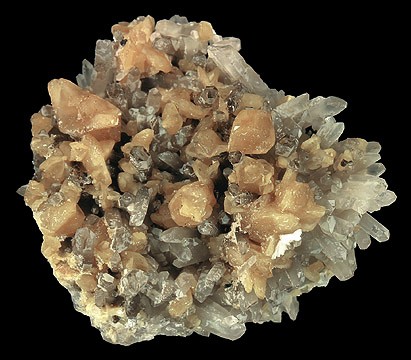
Monazite is a collective term for the IMA-recognized minerals and end members of a complete mixed series, consisting of monazite (La), monazite (Ce), monazite (Nd) and monazite (Sm) and their mixed crystals. These rare minerals belong to the mineral class of "phosphates, arsenates and vanadates" and crystallize in the monoclinic crystal system with the following chemical composition: monazite (La) - (La, Ce, Nd) [PO4] or LaPO4 monazite (Ce) - (Ce, La, Nd, Th) [PO4] or CePO4 monazite (Nd) - (Nd, Ce, Sm) [PO4] or NdPO4 monazite (Sm) - (Sm, Gd, Ce, Th) [PO4] or SmPO4
Use of dysprosium
The main uses of dysprosium are alloying additions to Nd2Fe14B permanent magnet materials (where part of the neodymium is replaced by dysprosium) to increase both the Curie point and, in particular, the coercivity, thereby improving the high temperature behavior of the alloy. The metal is also part of the magnetostrictive terfenol D (Tb0.3Dy0.7Fe2). Dysprosium is used in nuclear reactor control rods because of its relatively high neutron absorption cross section; its compounds have been used in the manufacture of laser materials and phosphorus activators as well as in metal halide lamps.
Economic and technical importance of dysprosium are relatively low. Its output is estimated at less than 100 tonnes per year. It is used in various alloys, in special magnets and with lead alloyed as shielding material in nuclear reactors. However, its use in wind turbine magnets has made these rare earth metals a rare commodity. In addition, the world's largest supplier China is slowing down its delivery in order to increase its own added value.
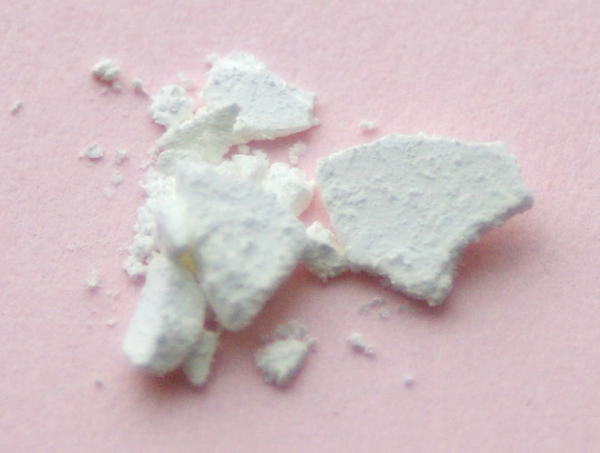
Dysprosium Oxide - Chemically, Dysprosium behaves like a typical trivalent rare earth, forming a series of light yellow compounds, the oxidation state of which is +3.
The periodic table with elements of strategic metals and rare earths
| 1 H |
2 He |
||||||||||||||||||||||||||||||
| 3 Li |
4 Be |
5 B |
6 C |
7 N |
8 O |
9 F |
10 Ne |
||||||||||||||||||||||||
| 11 Na |
12 Mg |
13 Al |
14 Si |
15 P |
16 S |
17 Cl |
18 Ar |
||||||||||||||||||||||||
| 19 K |
20 Ca |
21 Sc |
22 Ti |
23 V |
24 Cr |
25 Mn |
26 Fe |
27 Co |
28 Ni |
29 Cu |
30 Zn |
31 Ga |
32 Ge |
33 As |
34 Se |
35 Br |
36 Kr |
||||||||||||||
| 37 Rb |
38 Sr |
39 Y |
40 Zr |
41 Nb |
42 Mo |
43 Tc |
44 Ru |
45 Rh |
46 Pd |
47 Ag |
48 Cd |
49 In |
50 Sn |
51 Sb |
52 Te |
53 I |
54 Xe |
||||||||||||||
| 55 Cs |
56 Ba |
57 La |
58 Ce |
59 Pr |
60 Nd |
61 Pm |
62 Sm |
63 Eu |
64 Gd |
65 Tb |
66Dy |
67 Ho |
68 Er |
69 Tm |
70 Yb |
71 Lu |
72 Hf |
73 Ta |
74 W |
75 Re |
76 Os |
77 Ir |
78 Pt |
79 Au |
80 Hg |
81 Tl |
82 Pb |
83 Bi |
84 Po |
85 At |
86 Rn |
| 87 Fr |
88 Ra |
89 Ac |
90 Th |
91 Pa |
92 U |
93 Np |
94 Pu |
95 Am |
96 Cm |
97 Bk |
98 Cf |
99 Es |
100 Fm |
101 Md |
102 No |
103 Lr |
104 Rf |
105 Db |
106 Sg |
107 Bh |
108 Hs |
109 Mt |
110 Ds |
111 Rg |
112 Cn |
113 Nh |
114 Fl |
115 Mc |
116 Lv |
117 Ts |
118 Og |
Click on the item to learn more about pricing, sourcing, mining and usage
Other applications for dysprosium
Dysprosium, together with vanadium and other elements, is used to make laser materials.
Dysprosium is used to dope calcium fluoride and calcium sulfate crystals for dosimeters.
Terbium- and dysprosium-containing alloys show strong magnetostriction and are used in materials testing.
In neodymium-iron-boron magnets, it increases coercivity and extends the usable temperature range.
Dysprosium oxide improves the dielectric behavior of barium titanate for capacitors.
It is occasionally used because of its high capture cross section for thermal neutrons for the production of control rods in nuclear technology.
Dysprosium improves the emission spectrum of high performance halogen lamps.
Dysprosium cadmium chalcogenides serve as an infrared source for the study of chemical reactions.
| General | |
| Name, symbolOrder number | Dysprosium, Dy, 66 |
| Series | lanthanides |
| Group, period, block | La, 6, f |
| Appearance | silvery white |
| CAS number | 7429-91-6 |
| Mass fraction of the earth's envelope | 4,3 ppm |
| Atomic | |
| atomic mass | 162, 50 and others |
| atomic radius | 175 (228) pm |
| Covalent radius | 192 pm |
| Elektronenkonf. | [Xe] 4f (10) 6s (2) |
| 1. ionization | 573,0 KJ / mol |
| 2. ionization | 1130 KJ / mol |
| 3. ionization | 2200 KJ / mol |
| 4. ionization | |
| Physically | |
| Physical state | fixed |
| crystal structure | hexagonal |
| density | 8,559 g / cm3 (25 ° C) |
| Mohs hardness | |
| magnetism | paramagnetic (χm = 0,065) |
| melting point | 1680 K (1407 C) |
| boiling point | 2840 K (2567 C) |
| Molar volume | 19,01 * 10 (-6) m (3) / mol |
| Heat of vaporization | 230 KJ / mol |
| heat of fusion | 11,06 KJ / mol |
| speed of sound | 2710 m / s at 293,15 K |
| Electric conductivity | 1,08 * 10 (6) A / (V * m) |
| thermal conductivity | 11 W / (m * K) |
Dysprosium price
The prices of all rare earths, as well as dysprosium are updated regularly. Therefore, we have set up an extra page for the rare earth prices.
Please follow this link:
Prices of Dysprosium -> prices for rare earths
Images of dysprosium metal and dysprosium oxide for free use with reference to the source:
